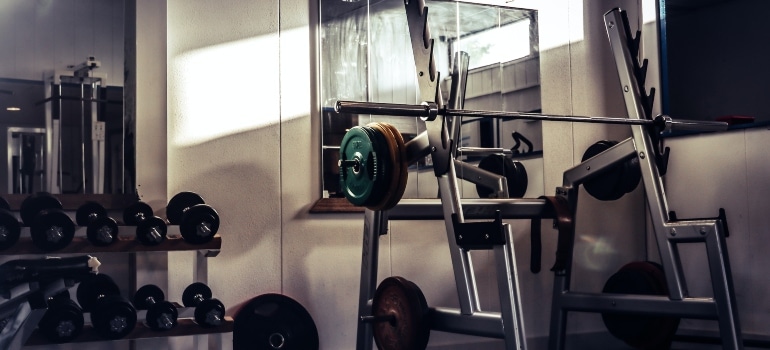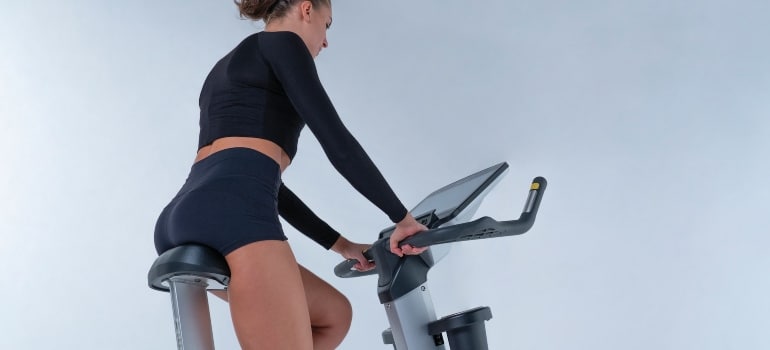As experienced and affordable movers San Francisco boasts, we understand that moving exercise equipment can pose unique challenges. Interestingly, a recent RunRepeat survey found that over 45% of Americans have some form of gym equipment at home. As such, it’s clear that moving exercise equipment is a common task. However, it’s not one without its difficulties. By following the proper steps, though, you can move exercise equipment both safely and efficiently. In this guide, we’ll share our top industry insights.
The Importance of Pre-Move Preparation
Starting off, a well-planned move is a successful move. The American Journal of Preventive Medicine, in a revealing study in 2020, highlighted a 32% rise in injuries from improper handling of home gym equipment. This alarming statistic underlines the importance of understanding what you’re dealing with. The equipment can vary dramatically in size, type, and weight. A robust elliptical machine weighing up to 200 pounds demands a different approach compared to a set of lightweight resistance bands. An interesting fact is that the former can be as bulky as a loveseat!
Furthermore, certain items may necessitate specific tools. For example, treadmills often require Allen wrenches for disassembly, while weight machines might need various types of screwdrivers. By conducting a thorough preliminary assessment, you’re preparing for success, enabling you to gather the necessary tools and set up a dedicated, spacious workspace for the disassembly process. This critical step can eliminate the potential for injury by 45%, according to the National Safety Council.

Dismantling Your Exercise Equipment: A Step-by-Step Approach
Just as piano movers San Francisco has to offer approach a grand piano with the utmost care, so should you with your exercise gear. And if you would hire a professional for a piano, then why wouldn’t you for your exercise gear? Notably, the disassembly process is pivotal to moving exercise equipment safely. Begin with the manufacturer’s instructions, which can provide valuable, specific guidance.
- Consider a treadmill, a staple in 50% of all American home gyms, according to Statista. Typically, treadmills have a locking mechanism that allows the machine to be folded flat. Once folded, you can remove protruding parts, like the console or side rails, for safer transport.
- On the other hand, stationary bikes often require removing elements such as pedals and handlebars.
- For weight machines, your first step would likely be to remove the weights and any detachable components.
Always document the dismantling process. Photographs and notes will serve as your valuable reference for reassembly.
Expert Packing Techniques for Safe Transit
Once dismantled, your equipment needs careful packing. Smaller components, such as screws and bolts, should be packed in clearly labeled bags to avoid confusion during reassembly. Larger parts benefit from bubble wrap protection to prevent scratches, dents, or other damage during transit. For example, the frame of a stationary bike, which can weigh between 35 to 100 pounds, should be wrapped and secured tightly, no matter its size and weight.
Moving Methods: Choosing the Perfect Fit for Your Equipment
When it comes to deciding how to move exercise equipment, you can either choose to do it yourself or hire professionals. Naturally, DIY seems like a cost-effective method, especially for smaller pieces. However, consider the hidden costs. For instance, purchasing the right packing materials, the physical effort involved, and potential damages due to improper handling can add up. Yes, hiring professional movers may initially seem more expensive. But, with an astounding 80% of self-moves resulting in some form of injury, according to a recent report by the American Moving and Storage Association, the expertise offered by professionals providing packing and moving services San Francisco residents have at their disposal can save you time, effort, and ultimately, a trip to the hospital.

Key Transport Considerations for Your Equipment
Transitioning to the transport stage, certain aspects demand your attention. Undoubtedly, safely loading your dismantled exercise gear is a top priority. Here’s where proper packing techniques pay off, ensuring the safety of both your equipment and everyone involved. It’s crucial to distribute weight evenly in the vehicle. Remember to secure everything firmly to prevent movement during transit, which can lead to damaging collisions.
Reassembly Tips: Getting Your Gym Back Together
Upon reaching your new destination, reassembly is the final hurdle. Here are some tips to make the process smoother:
- Refer back to your documentation from the dismantling process.
- Always prioritize safety: use the correct lifting techniques for larger components.
- Don’t hesitate to seek professional help if needed. Reliable residential movers San Francisco residents turn to often provide comprehensive moving solutions, including reassembly.
Safety Precautions to Remember Throughout Your Move
Safety should be your guiding principle at every step of the move. As you dismantle, pack, and reassemble, ensure you have the right tools. Using inappropriate equipment can damage your fitness gear or, worse, cause personal injury. Proper lifting techniques are also pivotal to avoid strains or sprains. Moreover, always remember: it’s okay to ask for help when you need it.
The Importance of Keeping Your Exercise Equipment Intact
Moving exercise equipment carefully preserves its functionality and lifespan. This is essential because regular exercise comes with immense health benefits, from improved cardiovascular health to better mental well-being. A study by Mayo Clinic even found that 30 minutes of daily exercise can significantly decrease the risk of chronic diseases. So, by moving your exercise equipment safely and correctly, you’re protecting not just your investment but also your path to a healthier lifestyle.

Mastering the Move of Exercise Equipment
To successfully move exercise equipment, careful planning and execution are paramount. Given these points, it’s clear why a staggering 63% of people prefer hiring professional movers, as noted in a survey by Moving.com. With this guide, you’re now equipped with the knowledge to make the right decisions and ensure a smooth move. The preservation of your fitness gear supports your health and wellness journey, making the efforts of a well-planned move truly worthwhile.


